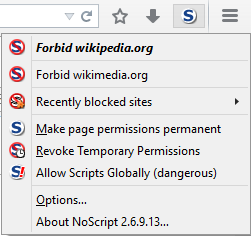|
Pop-up Ad
Pop-up ads or pop-ups are forms of online advertising on the World Wide Web. A pop-up is a graphical user interface (GUI) display area, usually a small window, that suddenly appears ("pops up") in the foreground of the visual interface. The pop-up window containing an advertisement is usually generated by JavaScript that uses cross-site scripting (XSS), sometimes with a secondary payload that uses Adobe Flash. They can also be generated by other Vulnerability (computing), vulnerabilities/security holes in browser security. A variation on the pop-up window, the pop-under advertisement, opens a new browser window under the active window. Pop-unders do not interrupt the user immediately but appear when the user closes the covering window, making it more challenging to determine which website created them. History Pop-up ads originated on the Tripod.com webpage hosting site in the late 1990s. JavaScript provided the capability for a web page to open another window. Ethan Zuckerman ... [...More Info...] [...Related Items...] OR: [Wikipedia] [Google] [Baidu] |
Internet Explorer 7
Windows Internet Explorer 7 (IE7) (codenamed Rincon) is a version of Internet Explorer, a web browser for Windows. It was released by Microsoft on October 18, 2006. It was the first major update to the browser since 2001. It does not support versions of Windows earlier than Windows XP and Windows Server 2003. It is the last version of Internet Explorer to support Windows XP x64 Edition RTM and Windows Server 2003 SP1. Some portions of the underlying architecture, including the rendering engine and security framework, have been improved. New features include tabbed browsing, page zooming, an integrated search box, a feed reader, better internationalization, and improved support for web standards, although it does not pass the Acid2 or Acid3 tests. Security enhancements include a phishing filter, 256-bit stronger encryption, and a "Delete browsing history" button to easily clear private data. It is also the first version of Internet Explorer which is branded and marketed u ... [...More Info...] [...Related Items...] OR: [Wikipedia] [Google] [Baidu] |
McAfee
McAfee Corp. ( ), formerly known as McAfee Associates, Inc. from 1987 to 1997 and 2004 to 2014, Network Associates Inc. from 1997 to 2004, and Intel Security Group from 2014 to 2017, is an American proprietary software company focused on online protection for consumers worldwide headquartered in San Jose, California. The company was purchased by Intel in February 2011; with this acquisition, it became part of the Intel Security division. In 2017, Intel had a strategic deal with TPG Capital and converted Intel Security into a joint venture between both companies called McAfee. Thoma Bravo took a minority stake in the new company, and Intel retained a Minority interest, 49% stake. The owners took McAfee public on the NASDAQ in 2020, and in 2022 an investor group led by Advent International Corporation took it Public company#Privatization, private again. History 1987–1999 The company was founded in 1987 as McAfee Associates, named for its founder John McAfee, who resigned ... [...More Info...] [...Related Items...] OR: [Wikipedia] [Google] [Baidu] |
Exit Intent Popup
An exit intent popup is a technique used in online shops and websites to retain visitors who are going to leave the site. With an exit intent popup, a visitor's mouse (computing), mouse movements are tracked, and when the Cursor (user interface), cursor moves outside the upper page boundary (because the tab bar is usually there), a popup window is shown. The ad is triggered by using a JavaScript snippet that measures the speed and direction of the mouse. Often, the popup contains a discount code to convince the user to finish the sale. Exit intent advertisements can also be used to offer a discount, push to a demo, collect emails, or segment to a newsletter list. Exit intent technology, including the detection of exit behavior by an internet user, was invented and patented by Ryan Urban, the CEO and co-founder of BounceX, in 2012. Exit intent technology on mobile devices The exit-intent technology works differently on mobile devices than on a desktop computer, desktop. There is ... [...More Info...] [...Related Items...] OR: [Wikipedia] [Google] [Baidu] |
Webform
A webform, web form or HTML form on a web page allows a user to enter data that is sent to a server for processing. Forms can resemble paper or database forms because web users fill out the forms using checkboxes, radio buttons, or text fields. For example, forms can be used to enter shipping or credit card data to order a product, or can be used to retrieve search results from a search engine. Description Forms are enclosed in the HTML <form> element. This HTML element specifies the communication endpoint the data entered into the form should be submitted to, and the method of submitting the data, GET or POST. Elements Forms can be made up of standard graphical user interface elements: * <text> — a simple text box that allows input of a single line of text. * <email> - a type of <text> that requires a partially validated email address * <number> - a type of <text> that requires a number * <password> — similar to <tex ... [...More Info...] [...Related Items...] OR: [Wikipedia] [Google] [Baidu] |
John C
John is a common English name and surname: * John (given name) * John (surname) John may also refer to: New Testament Works * Gospel of John, a title often shortened to John * First Epistle of John, often shortened to 1 John * Second Epistle of John, often shortened to 2 John * Third Epistle of John, often shortened to 3 John People * John the Baptist (died ), regarded as a prophet and the forerunner of Jesus Christ * John the Apostle (died ), one of the twelve apostles of Jesus Christ * John the Evangelist, assigned author of the Fourth Gospel, once identified with the Apostle * John of Patmos, also known as John the Divine or John the Revelator, the author of the Book of Revelation, once identified with the Apostle * John the Presbyter, a figure either identified with or distinguished from the Apostle, the Evangelist and John of Patmos Other people with the given name Religious figures * John, father of Andrew the Apostle and Saint Peter * Pope John ( ... [...More Info...] [...Related Items...] OR: [Wikipedia] [Google] [Baidu] |
NoScript
NoScript (or NoScript Security Suite) is a free and open-source extension for Firefox- and Chromium-based web browsers, written and maintained by Giorgio Maone, a software developer and member of the Mozilla Security Group. Features Active content blocking By default, NoScript blocks active (executable) web content, which can be wholly or partially unblocked by allowlisting a site or domain from the extension's toolbar menu or by clicking a placeholder icon. In the default configuration, active content is globally denied, although the user may turn this around and use NoScript to block specific unwanted content. The allowlist may be permanent or temporary (until the browser closes or the user revokes permissions). Active content may consist of JavaScript, web fonts, media codecs, WebGL, Java applet, Silverlight and Flash. The add-on also offers specific countermeasures against security exploits. Because many web browser attacks require active content that the browser nor ... [...More Info...] [...Related Items...] OR: [Wikipedia] [Google] [Baidu] |
HTTP 302
The HTTP response status code 302 Found is a common way of performing URL redirection. The HTTP/1.0 specification () initially defined this code, and gave it the description phrase "Moved Temporarily" rather than "Found". An HTTP response with this status code will additionally provide a URL in the header field Location. This is an invitation to the user agent (e.g. a web browser) to make a second, otherwise identical, request to the new URL specified in the location field. The end result is a redirection to the new URL. Many web browsers implemented this code in a manner that violated this standard, changing the request type of the new request to GET, regardless of the type employed in the original request (e.g. POST). For this reason, HTTP/1.1 () added the new status codes 303 and 307 to disambiguate between the two behaviours, with 303 mandating the change of request type to GET, and 307 preserving the request type as originally sent. Despite the greater clarity provided ... [...More Info...] [...Related Items...] OR: [Wikipedia] [Google] [Baidu] |
Adblock Plus
Adblock Plus (ABP) is a free and open-source browser extension for content-filtering and ad blocking. It is developed by Eyeo GmbH, a German software company. The extension has been released for Mozilla Firefox (including mobile), Google Chrome, Internet Explorer, Microsoft Edge, Opera, Safari, Yandex Browser, and Android. In 2011, Adblock Plus and Eyeo attracted considerable controversy over its "Acceptable Ads" program to "allow certain non-intrusive ads" (such as Google Ads) to be allowed under the extension's default settings. While participation in the whitelisting process was free for small websites, large advertising companies were required to pay a fee in order for their ads to be whitelisted. Background The original version of Adblock (0.1) was written as a side project for Firefox by Danish software developer Henrik Aasted Sørensen, a university student at the time, in 2002. It hid image ads through user-defined filters from the page but did not prevent them fr ... [...More Info...] [...Related Items...] OR: [Wikipedia] [Google] [Baidu] |
AdBlock
AdBlock is an ad-blocking browser extension for Google Chrome, Apple Safari (desktop and mobile), Firefox, Samsung Internet, Microsoft Edge and Opera. AdBlock allows users to prevent page elements, such as advertisements, from being displayed. It is free to download and use, and it includes optional donations to the developers. The AdBlock extension was created on December 8, 2009, which is the day that supports for extensions was added to Google Chrome. It was one of the first Google Chrome extensions that was made. Since 2016, AdBlock has been based on the Adblock Plus source code. In July 2018, AdBlock acquired uBlock, a commercial ad-blocker owned by uBlock LLC and based on uBlock Origin. In April 2021, eyeo GmbH (developer of Adblock Plus) announced its purchase of AdBlock, Inc (formerly BetaFish, Inc). Crowdfunding Gundlach launched a crowdfunding campaign on Crowdtilt in August 2013 in order to fund an ad campaign to raise awareness of ad-blocking and to rent a bi ... [...More Info...] [...Related Items...] OR: [Wikipedia] [Google] [Baidu] |
Window (computing)
In computing, a window is a Graphical widget, graphical control element. It consists of a visual area containing some of the graphical user interface of the program it belongs to and is framed by a #Window decoration, window decoration. It usually has a rectangular shape that can overlap with the area of other windows. It displays the ''output'' of and may allow ''input'' to one or more Process (computing), processes. Windows are primarily associated with graphical displays, where they can be manipulated with a Pointer (graphical user interfaces), pointer by employing some kind of pointing device. Text-only displays can also support windowing, as a way to maintain multiple independent display areas, such as multiple buffers in Emacs. Text windows are usually controlled by keyboard, though some also respond to the mouse. A graphical user interface (GUI) using windows as one of its main "Interface metaphor, metaphors" is called a windowing system, whose main components are the disp ... [...More Info...] [...Related Items...] OR: [Wikipedia] [Google] [Baidu] |





